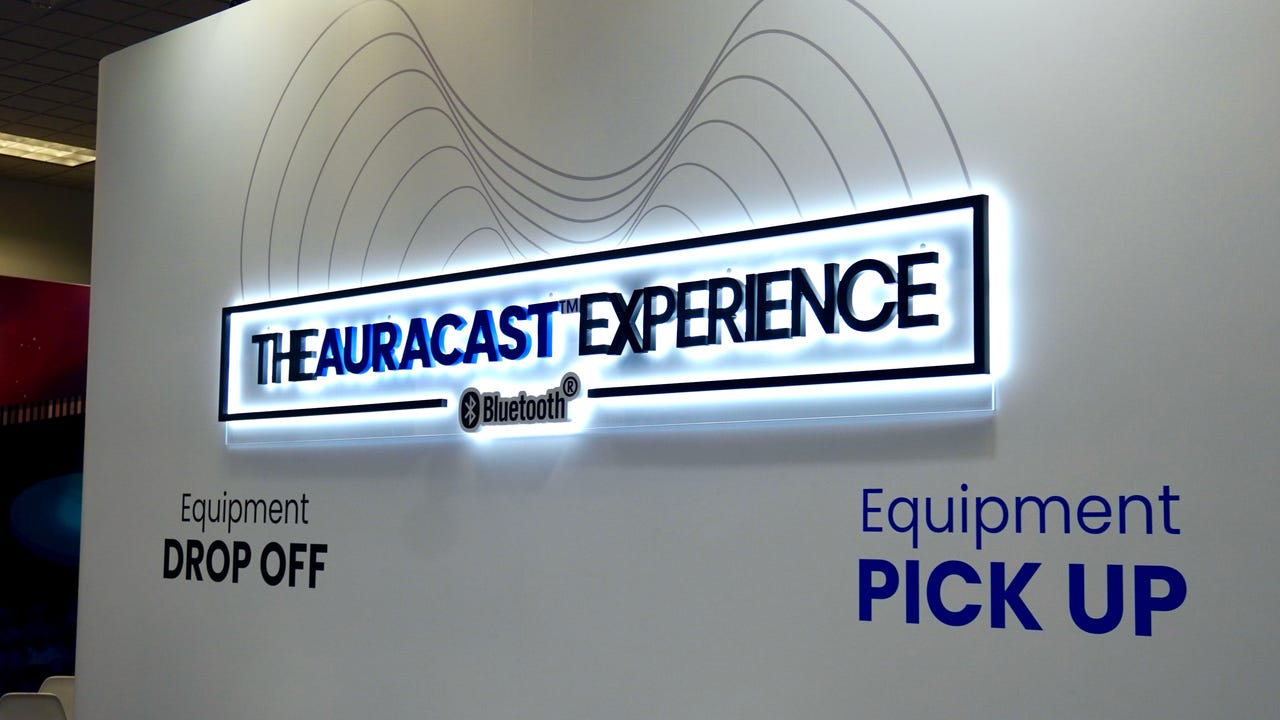I demoed Bluetooth's Auracast, and its going to be a big deal. Here's why

When Bluetooth started getting recognition, there was much confusion about what it was, how it worked, and why people needed it, and now it's found on nearly every device. We are at the same inflection point with Bluetooth's latest technology, Auracast, which has the potential to significantly upgrade your listening experiences.
Also: CES 2024: What's Next in Tech
At CES, I had the opportunity to demo Auracast hands-on, which helped contextualize the value of a technology that can otherwise be challenging to grasp if you're just reading about a product release. Now, I want to share those insights with you.
For starters, what is Auracast?
Auracast, first announced in 2022, is a new way to broadcast audio, which allows any audio transmitter, such as your smartphones, laptops, and televisions, to connect to an unlimited amount of receivers, such as earbuds, speakers, and more.
If it still sounds confusing, it did to me, too, until I saw real-world examples. Essentially, Auracast will let you tap into sounds that you otherwise wouldn't be able to, such as a muted TV in a public place or the music your friends are listening to on their own devices.
What are some real-world Auracast applications?
In the demo, I wore Auracast-compatible earbuds and was handed a phone with the Auracast app downloaded. Then, I got to walk through different real-world scenarios where the technology would be useful.
Also: The best smart home tech at CES 2024
The first was a bar with two muted TVs that were playing two different sports games simultaneously, mimicking the typical viewing experience at most bars. Instead of having to sit there watching in silence, I was able to use Auracast to select the TV playing the game I wanted to listen to in the Auracast App, and then hear the audio in my headphones.
Another example is the airport, where there are usually so many different announcements simultaneously, which makes it hard to listen to the ones you care about. With Auracast, you can tune into the announcements that are relevant to you by selecting the particular channel in the app.
Lastly, in an auditorium, lecture hall, or conference room, instead of depending on the venue's sound system, you can hear the broadcast on your headphones with nearly no latency by connecting via the Auracast app.
Also: These wireless speakers deliver gloriously smooth sound
This application, in particular, could be incredibly impactful for the hard-of-hearing community, who would be able to sync their hearing devices to Auracast to enjoy a better listening experience.
Auracast could also be used for personal pleasure, such as sharing the music you are listening to with friends.
What devices support it?
In all these cases, both the transmitter and the receiver would have to be Auracast-compatible. As the technology becomes more popular, more devices will include Auracst compatibility. At CES this year, we've seen a lot of headphones and speakers launch that natively include Auracast technology, including JBL's and Sennheiser's latest lineups.
Also: The best sound systems you can buy, according to experts
However, even if the device doesn't natively include Auracast-compatible accessories, there are ways to make them Auracast-compatible. So, in the same way you can use a Fire Stick to give your television smart TV capabilities, the Philips Bluetooth adapter with Auracast can be plugged into a phone with a USB-C port to give it Auracast compatibility.
Philips Bluetooth adapter with Auracast.
Why is it the next big thing?
After seeing its applications, Auracast just makes sense. The technology can solve a real-world problem, and I'm sure pretty much everyone could benefit in some way. The demo just had me wondering why this solution hadn't been created before.
